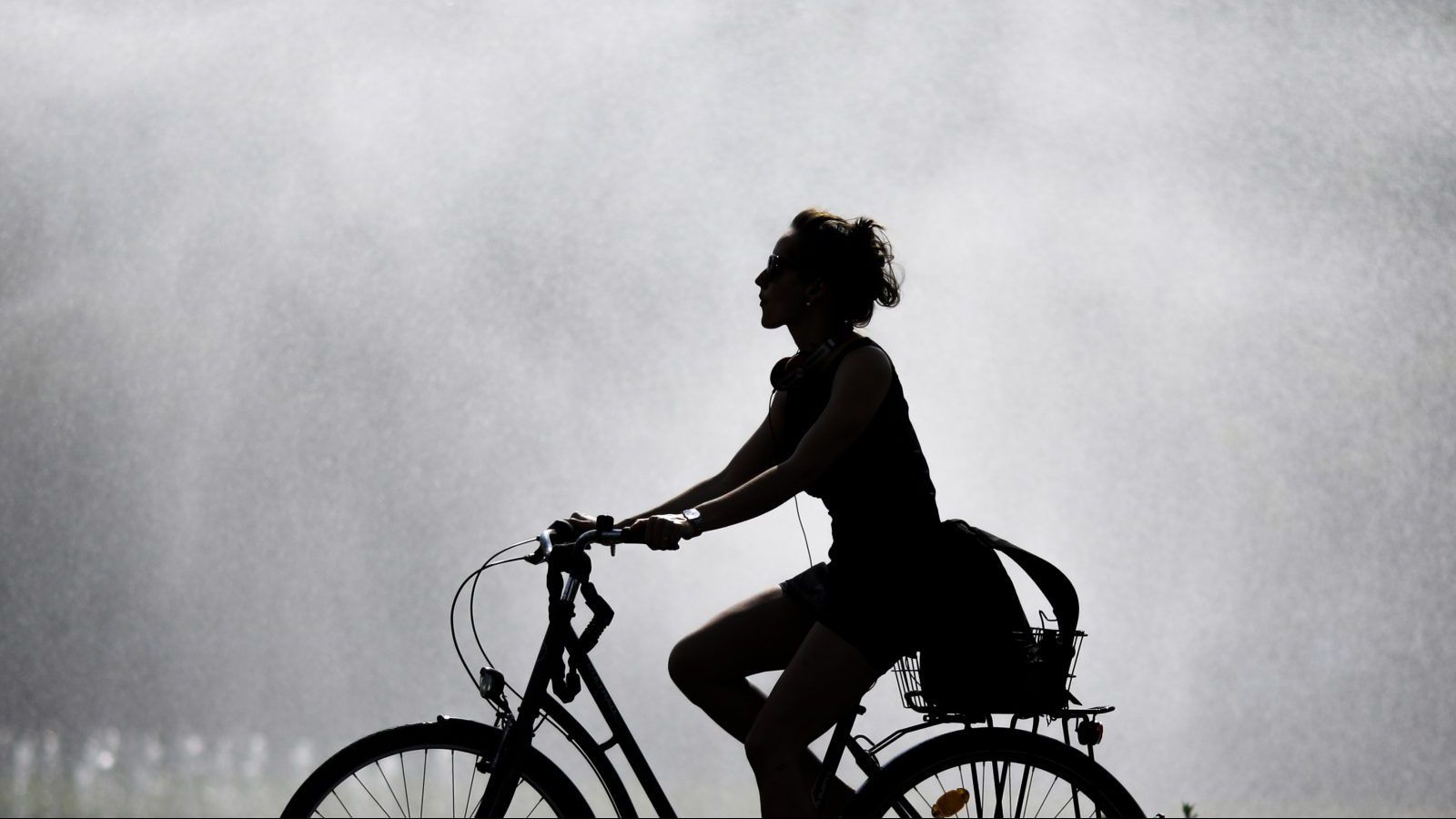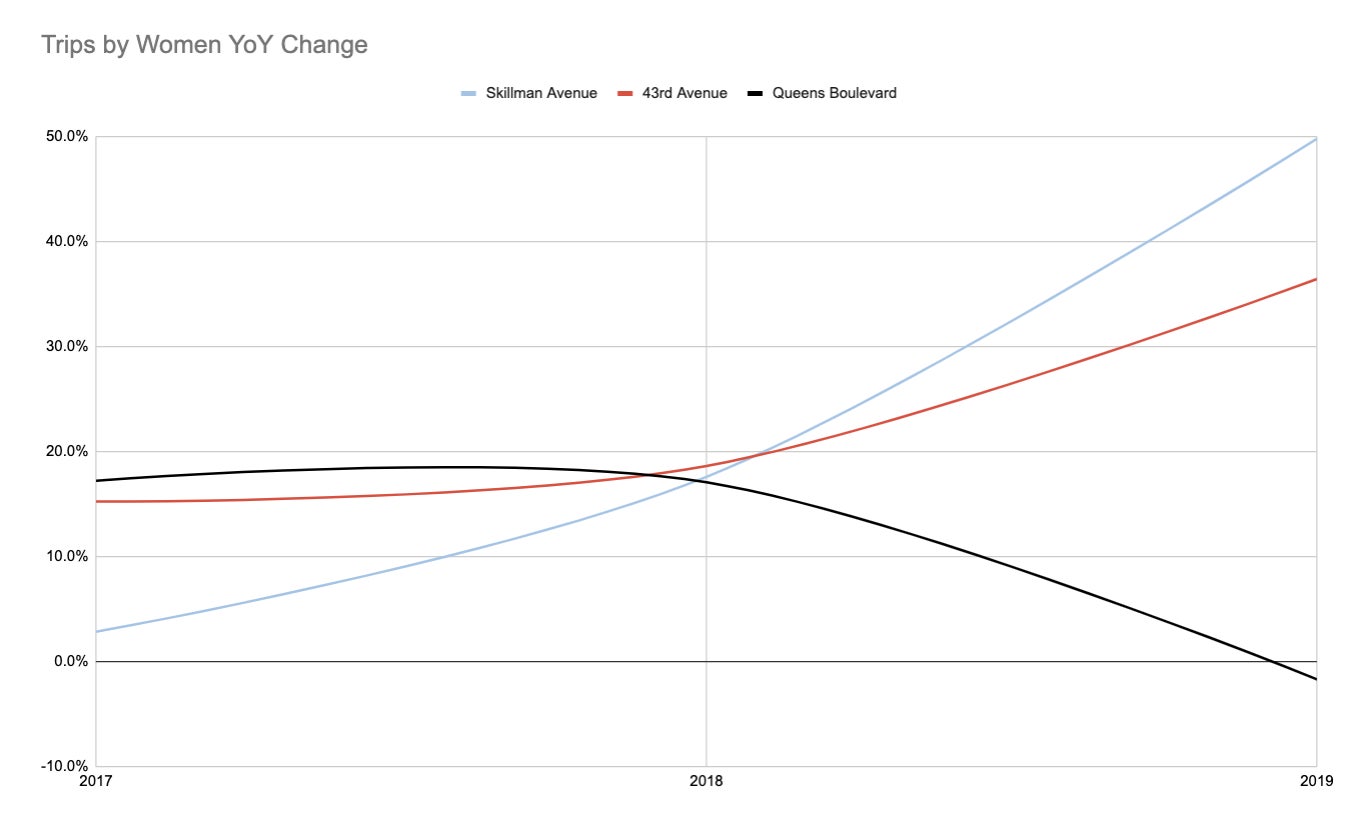Women love bikes—so why don’t they cycle to work?
When I moved back to the US two years ago, buying a bike was at the top of my to-do list. I’d spent the previous six months living in the Netherlands, where pedaling alongside Dutch trams and taxis made me feel independent and strong enough to go anywhere.


When I moved back to the US two years ago, buying a bike was at the top of my to-do list. I’d spent the previous six months living in the Netherlands, where pedaling alongside Dutch trams and taxis made me feel independent and strong enough to go anywhere.
But the longer I remained in the US, the more I hesitated. In the mid-sized city I lived in, there was virtually no biking infrastructure. The few commuting cyclists who dared to dart and weave through morning traffic were usually men, and well-meaning friends and coworkers cautioned me that drivers could easily overlook a small woman like me.
Their warnings stayed with me when I moved to New York City. When I think about cycling to work here—facing off against aggressive taxis, struggling to be seen by bus and truck drivers, trying to convince motorists and myself that I deserve to take up space on the road—I feel fear, not freedom. And I am not alone.
In countries and cities around the world, the two-wheel commute is largely dominated by men. From France to Australia, women are far less likely to bike than men. That pattern holds true in cities from Seville to London, Seattle, and Vancouver.
What’s behind cycling’s gender gap? It’s not that women dislike bikes. In the US, for example, 60% of bike owners between the ages of 17 and 28 are women, according to the League of American Bicyclists.
Cultural factors certainly play a role. Women are expected to arrive at the office more carefully dressed and coiffed than men, which can be a challenge after huffing uphill in a rain shower. Black women, in particular, are told to “tame” their natural hair at work—an expectation that helmets only render more burdensome. Male-dominated bike culture can make women feel unwelcome in cycling clubs or bike shops. Most importantly, commuting women make more stops than men to chauffeur children and pick up groceries, tasks that prove more difficult on two wheels.
But survey after survey finds that one concern trumps all others: safety. Women are more likely than men to say they want safer cycling. Many cities have failed to deliver on this score.
Historically, the places where a cycling gender gap persists are also places lacking in bike infrastructure. Without bicycle lanes, barriers, greenways, and the like, cyclists may be forced into risky situations alongside motorists. Too often, this leads to fatal accidents. A University of Minnesota study suggests the risks are even higher for women: drivers are more likely to dangerously invade a woman cyclist’s space.
Fixing bike lanes’ gender problem
The cycling gender gap doesn’t have to exist. In Denmark, women make up 53% of all cyclists. In Germany, 49% of bike trips are made by women. The Netherlands has an even higher share at 55%.
But to join the ranks of cities like Amsterdam and Copenhagen, urban centers have to invest in biking infrastructure in an equitable and effective way. That means understanding where women don’t feel safe biking, and what types of infrastructure would act as a corrective.
Traditionally, cities used crash counts and rates to identify their riskiest roads and determine where to build new bike infrastructure. But crash data directs cities’ attention to the roads cyclists already use —and by extension, to the people who are already cyclists. It’s also important to look at the data that tells cities where underrepresented cycling populations—and women in particular—opt out of riding bikes altogether.
A path to parity
To understand how cities can use data in creative ways to better evaluate biking infrastructure, consider Queens, New York. The borough is a jumbled network of avenues, boulevards, and highways crowded with traffic feeding into Manhattan and New York City’s busiest airports. Yet biking infrastructure is often little more than white paint on the road. A 2016 study found that less than 8.5% of roads across nine Queens neighborhoods had any biking infrastructure at all.
But in 2018, the city decided to install parking-protected lanes on two corridors: 43rd Avenue and Skillman Avenue. The upgraded lanes are buffered from moving traffic by a lane of parked cars. A paint-only bike lane on nearby Queens Boulevard was left unaltered. This created a natural experiment for fitness startup Strava, whose 48 million athlete users upload activities in 195 countries. Quartz asked Strava to analyze data from its new Strava Metro 3.0 service, one of the largest aggregated and de-identified transportation datasets for cities.

Strava’s study analyzed 11,416 bike trips by women in Queens between 2015 and 2019. The results were clear: Making streets safer increased women’s use of them dramatically. In 2019, women made nearly 40% more trips on 43rd and nearly 50% more trips on Skillman than they had in 2018. During the same period, overall trips on 43rd and Skillman remained stable, meaning men’s ridership did not increase after the bike lane upgrades. The only time a comparable increase in women’s use of 43rd and Skillman occurred was between 2015 and 2016, when cyclists had to choose alternative routes while Queens Boulevard’s bike lanes were under construction.
As for Queens Boulevard—which once had a narrower gender gap than either of the other streets—the number of trips by women cyclists declined slightly in 2019. Provided with safer streets, women left their old routes behind.
New York City relies on crash counts and crash rates to determine which of its streets are riskiest. But these metrics could not have revealed how many women were opting out of riding on Skillman and 43rd avenues—or how successful parking-protected bike lanes were at narrowing the gap.
Dutch women fought. So can we.
Local communities also have an important role to play in bringing about safer streets for bicyclists—as illustrated by The Netherlands’ recent history.
The country wasn’t always a cyclist’s paradise. In 1969, total traffic fatalities had soared to over 3,000, nearly twice as high as a decade earlier. Cyclist fatalities hovered around 500 deaths per year. It was only when Dutch women began fighting for safe roads that things changed. Activists—including a mothers-led group called Stop de Kindermoord (Stop Child Murder)—staged protests, blocked traffic, and demanded that streets be made safe for cyclists, pedestrians, and children at play.
Within a decade, Dutch cities had designed tens of thousands of kilometers of bike lanes painted a distinctive bright red. Municipalities and the national government formed offices dedicated to promoting and protecting bike use through public campaigns and extensive databases tracking cyclists’ concerns. The national government even created a tax credit for cyclists.
By 2018, the Netherlands had reduced the number of total traffic fatalities to 678, and the number of cyclist fatalities to 228. Today, Dutch mothers and fathers pedal bikes while toting toddlers in seats or in wagons. Primary-school children cycle around cities on their own. No one even bothers with helmets.
And because Dutch women fought for their roads fifty years ago, they don’t have to fight today. They cycle with their backs straight and eyes forward, confident that no car or bus will invade the space they’ve made for themselves. At all hours, they bike—alone or with a friend straddling the back wheel, sometimes balancing purses and shopping bags. Most of the time, they wear sneakers. No one expects them to carry a change of shoes for work.
I can only hope that one day, riding my bike in New York City may feel more like those canal-side pedals through the Netherlands—cycling with freedom, not fear.
This story has been updated to show that Strava now has 48 million users, up from 46 million earlier this year.